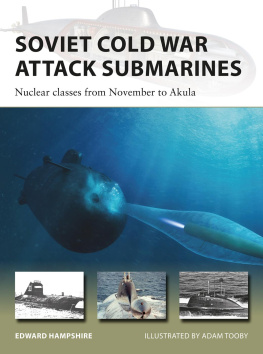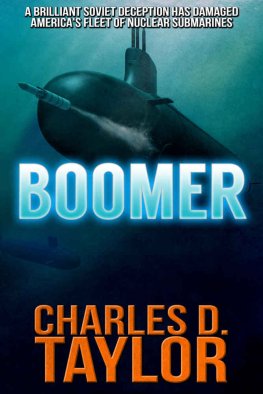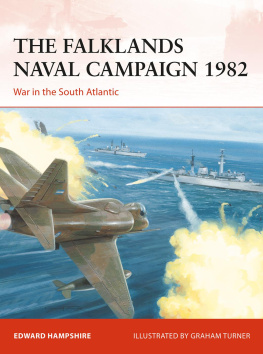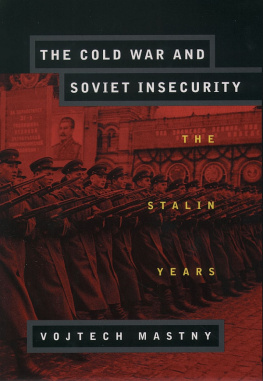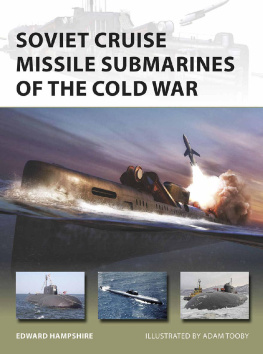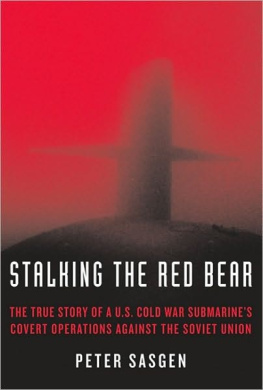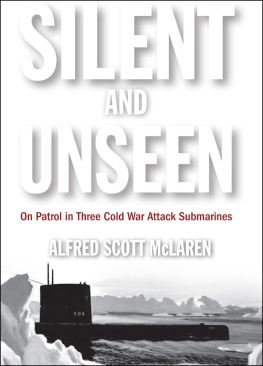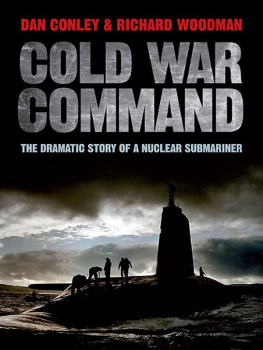Hampshire Edward - Soviet Cold War Attack Submarines
Here you can read online Hampshire Edward - Soviet Cold War Attack Submarines full text of the book (entire story) in english for free. Download pdf and epub, get meaning, cover and reviews about this ebook. year: 2020, publisher: Bloomsbury Publishing Plc, genre: Politics. Description of the work, (preface) as well as reviews are available. Best literature library LitArk.com created for fans of good reading and offers a wide selection of genres:
Romance novel
Science fiction
Adventure
Detective
Science
History
Home and family
Prose
Art
Politics
Computer
Non-fiction
Religion
Business
Children
Humor
Choose a favorite category and find really read worthwhile books. Enjoy immersion in the world of imagination, feel the emotions of the characters or learn something new for yourself, make an fascinating discovery.
- Book:Soviet Cold War Attack Submarines
- Author:
- Publisher:Bloomsbury Publishing Plc
- Genre:
- Year:2020
- Rating:3 / 5
- Favourites:Add to favourites
- Your mark:
- 60
- 1
- 2
- 3
- 4
- 5
Soviet Cold War Attack Submarines: summary, description and annotation
We offer to read an annotation, description, summary or preface (depends on what the author of the book "Soviet Cold War Attack Submarines" wrote himself). If you haven't found the necessary information about the book — write in the comments, we will try to find it.
Soviet Cold War Attack Submarines — read online for free the complete book (whole text) full work
Below is the text of the book, divided by pages. System saving the place of the last page read, allows you to conveniently read the book "Soviet Cold War Attack Submarines" online for free, without having to search again every time where you left off. Put a bookmark, and you can go to the page where you finished reading at any time.
Font size:
Interval:
Bookmark:


The development of nuclear-powered submarines armed with conventional torpedoes (attack submarines) began almost by accident in the first years of the Cold War, as a way to make use of a one-off submarine design, the purpose of which had disappeared with the death of Stalin. Even then, it took another decade before nuclear-powered attack submarines moved from behind the shadow of ballistic and cruise missile-firing boats. However, by the end of the Cold War, nuclear-armed attack submarines now armed with torpedoes and torpedo-tube launched missiles had become the backbone of the Soviet submarine fleet, with a pedigree of impressive innovation in propulsion, materials and weaponry.
Nuclear propulsion for submarines had been actively discouraged by Soviet leaders in the early post-war years, fearful that devoting such resources to this technology would divert expertise and resources away from the pre-eminent requirement to develop the nuclear bomb. However, development work did start on a submarine that would be armed with a single, large nuclear-armed torpedo, the T15, designed to destroy key NATO naval harbours such as Pearl Harbor or Gibraltar. In the Autumn of 1952, Stalin finally agreed to the development of a nuclear-powered submarine, but it would primarily act as the prototype launching platform for the T15 nuclear torpedo. This design became the November class (Project 627). On Stalins death, it seemed that this strange submarine design and its huge, harbour-destroying torpedo would die with its progenitor. Given that the first was already under construction, Admiral Kuznetsov, the head of the Soviet Navy, agreed to retain the submarine on the condition that it became a conventional torpedo-firing boat. The design was therefore hastily recast with ordinary torpedo tubes. However, this boat was still a prototype with no guarantee of series con struction.
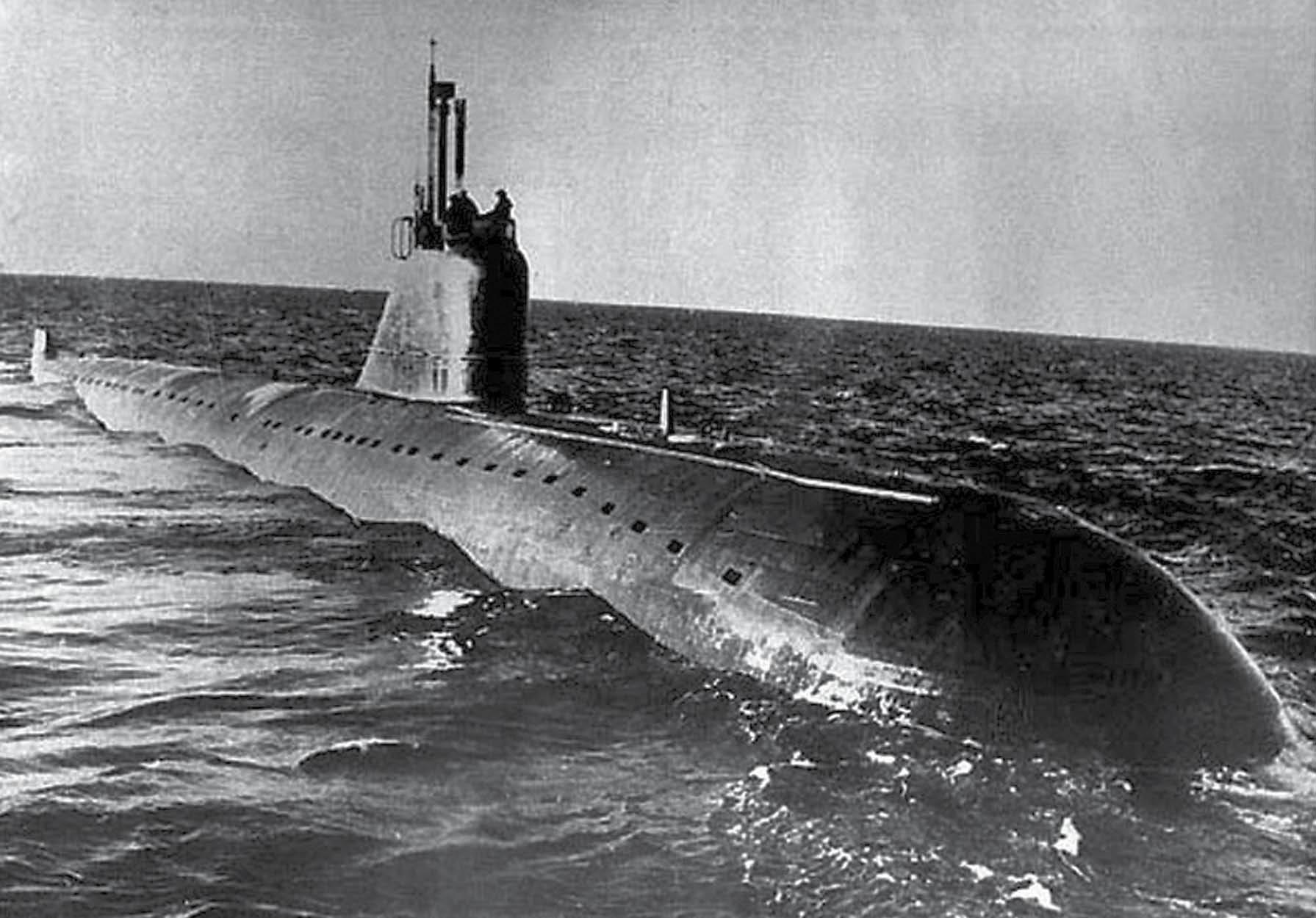
The November class was the Soviet Unions first class of nuclear-powered attack submarines. (Getty Images)
This changed when the Soviets realised that the United States was beginning to mass-produce its own nuclear-powered attack submarines. In 1955, the Soviet Council of Ministers approved the building of additional modified November class boats, eventually producing a class of 13. In addition, an experimental boat developed from the November class, the Project 645, was built that used a liquid-metal heat exchange medium in its reactor rather t han water.

The USS Andrew Jackson of the Lafayette class SSBNs. It was submarines such as this that spurred the Soviets into increasing the production of nuclear-powered attack submarines. (US Department
of Defense)
Stalins successor, Nikita Khrushchev, was sceptical about the need for a large surface fleet and forced the cancellation of a number of missile cruiser designs. In 1958, however, he agreed to the mass production of nuclear-powered submarines, alongside the development of numerous guided-missile types. He considered attack submarines to be less important than ballistic and cruise-missile-firing nuclear submarines and, as a result, attack boats were the third priority, with fewer hulls being projected. Khrushchev was a guided missile enthusiast (with a son working at one of the major guided missile design bureaux) and, although he acknowledged the need for some attack boats, clearly saw ballistic and cruise-missile-firing submarines as his first priority. Early design work therefore began on the second generation of nuclear-powered submarines. Whilst this was underway, it became clear to the Soviet leadership that the main means by which NATO naval forces could attack the USSR with nuclear weapons was shifting. Previously the key threat had been from carrier-borne strike aircraft equipped with nuclear bombs, but it was now moving to nuclear-powered submarines carrying ballistic missiles (known as SSBNs in NATO parlance, the SS denoting a submarine, B ballistic missile firing and N nuclear propelled). The best way to counter such vessels was with torpedoes and the nuclear-powered attack submarine began to develop a much higher profile. Construction therefore shifted away from cruise-missile-firing boats the pre-eminent underwater carrier killers to the second generation of attack boats, which would become the pre-eminent SSBN killers.

The second generation of Soviet nuclear-powered attack submarines consisted of two separate designs. The Victor class (Project 671) was a logical development of the November class and incorporated a number of improvements and technical developments, including a new hull shape, single shaft propulsion, a new sonar and the ability to engage other submarines underwater as well as just surface vessels. For much of the rest of the Cold War, the Victor class, and its later variants, became the backbone of the Soviet attack submarine fleet with 48 completed between 1967 and 1992.
The other second-generation submarine design was a much more radical vessel the Alfa class (Project 705). In effect, it re-thought the concept of the submarine from the bottom up. Not only was a liquid-metal reactor chosen (developed from the experimental Project 645 submarine), and a light and strong titanium alloy chosen for the hull, but the submarine was also heavily automated. Using aircraft design principles and approaches, the crew number was reduced to the unheard-of level of only 29. Seven boats were completed and they were decades ahead of their time extremely fast, deep-diving and low-crewed but because of these multiple innovations they were plagued with problems and were extremely difficult and expensive to keep op erational.
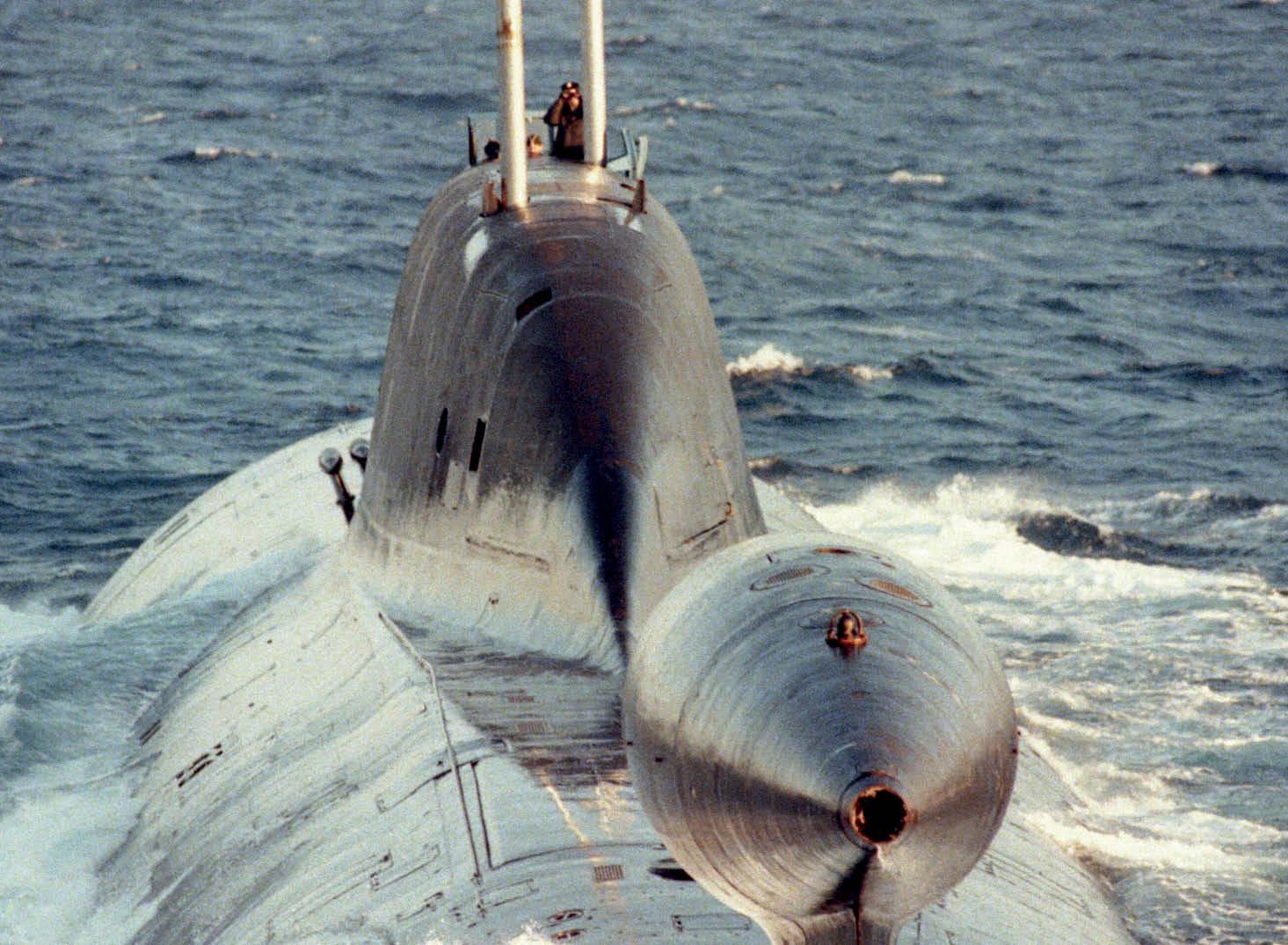
A stern aerial view of an Akula class submarine. By the third generation of Soviet submarines, quieting technologies were beginning to match those of NATO submarines. (US Department
of Defense)
The single Mike class (Project 685) attack submarine stood between the second and third generations. She was large, also titanium-hulled and was designed to be an extremely deep-diving submarine, able to submerge to 1,000m (nearly double that of any other Soviet combat submarine and three times that of any US combat submarine). Unlike other classes detailed in this book, she remained a one-off vessel with no sisters co nstructed.
During the late 1970s, the Soviet nuclear-powered attack submarine evolved into a truly general-purpose tactical and strategic vessel able to seek out NATO SSBNs, and increasingly to attack NATO carrier battle groups with large-calibre torpedoes designed to stop carriers or super-tankers with a single hit. The Granat cruise missile, rather like the US Tomahawk , also gave these boats a strategic capability able to attack targets deep inland with either nuclear or conventional warheads.
Font size:
Interval:
Bookmark:
Similar books «Soviet Cold War Attack Submarines»
Look at similar books to Soviet Cold War Attack Submarines. We have selected literature similar in name and meaning in the hope of providing readers with more options to find new, interesting, not yet read works.
Discussion, reviews of the book Soviet Cold War Attack Submarines and just readers' own opinions. Leave your comments, write what you think about the work, its meaning or the main characters. Specify what exactly you liked and what you didn't like, and why you think so.

